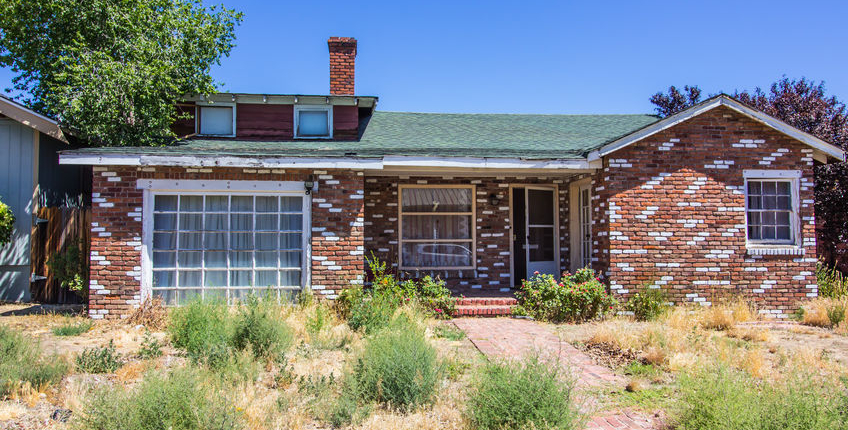Frequently called “distressed properties,” foreclosures are sold at a discount depending on property conditions. There are a couple of ways to buy a foreclosed home: through an online or live auction or an REO, where a bank or government entity (Fannie Mae, Freddie Mac) lists homes that have been repossessed for non-payment. An auction can move fast with experienced investors competing for the best inventory. With little or no time for an inspection or title search, an inexperienced home flipper may be exposed to a host of new ways to lose money since a foreclosure is sold “as-is.”
If you’re just getting started in real estate investing and are looking to buy a foreclosed home, it may be a more prudent path to check lender-maintained REO websites or speak to local real estate brokers, many of whom sell REO properties for lenders. Real estate owned (REO) is the term for a property owned by a lender because it failed to sell in a foreclosure auction after the borrower defaulted on his or her mortgage.
With that in mind, here are a few pointers for the beginner:
Have a budget in mind, have your financing lined up with a pre-approval letter and, have a plan.
Look for the worst house – a mid-sized one that would appeal to a small family – in a good neighborhood (ie: one with good schools and nearby shopping). It is harder to attract buyers for a run-down neighborhood.
Know the comparables (comps) for that area and make sure your budget will allow you to bring the house up to the standards of the neighborhood.
Get an inspection, title search, and as much information on the house as possible before making an offer. Make sure the title of the property is clear of any liens or encumbrances.
Have a contractor walk the property with you.
Avoid homes with mechanical problems or serious damage to the roof or foundation .
Get the insurance appropriate to the level of your rehab.
Add beauty. Focus on a house that mostly needs cosmetic improvements and can be updated quickly. Look for an ugly house that would benifit with coat of paint, refinishing the wood flooring, new carpet, and resurfaced cabinets with new hardwear, and new lighting.
Expensive granite counters might look nice but not fit the neighborhood. Again, know your market (comps). Make sure the kitchen has a functional layout with new appliances. The appliances complete the look of the kitchen and that is where you get the most bang for your buck. You should be able to get a package deal for the stove, dishwasher and microwave for less than $2,000. Add that to a refrigerator for Home Depot or Lowe’s for about $1500, and that is will help to move your property. That will help that first time home buyer get into the house easier.
Landscaped the yard, front and back.
Try to incorporate the newest technology like the thermostat and a security camera for the outside (think Ring).
Update the bathrooms with new vanities, basins, cabinet resurfacing, and soft neutral paint colors.
Consider minimalist staging to help set the atmosphere.
Remember time is money.



